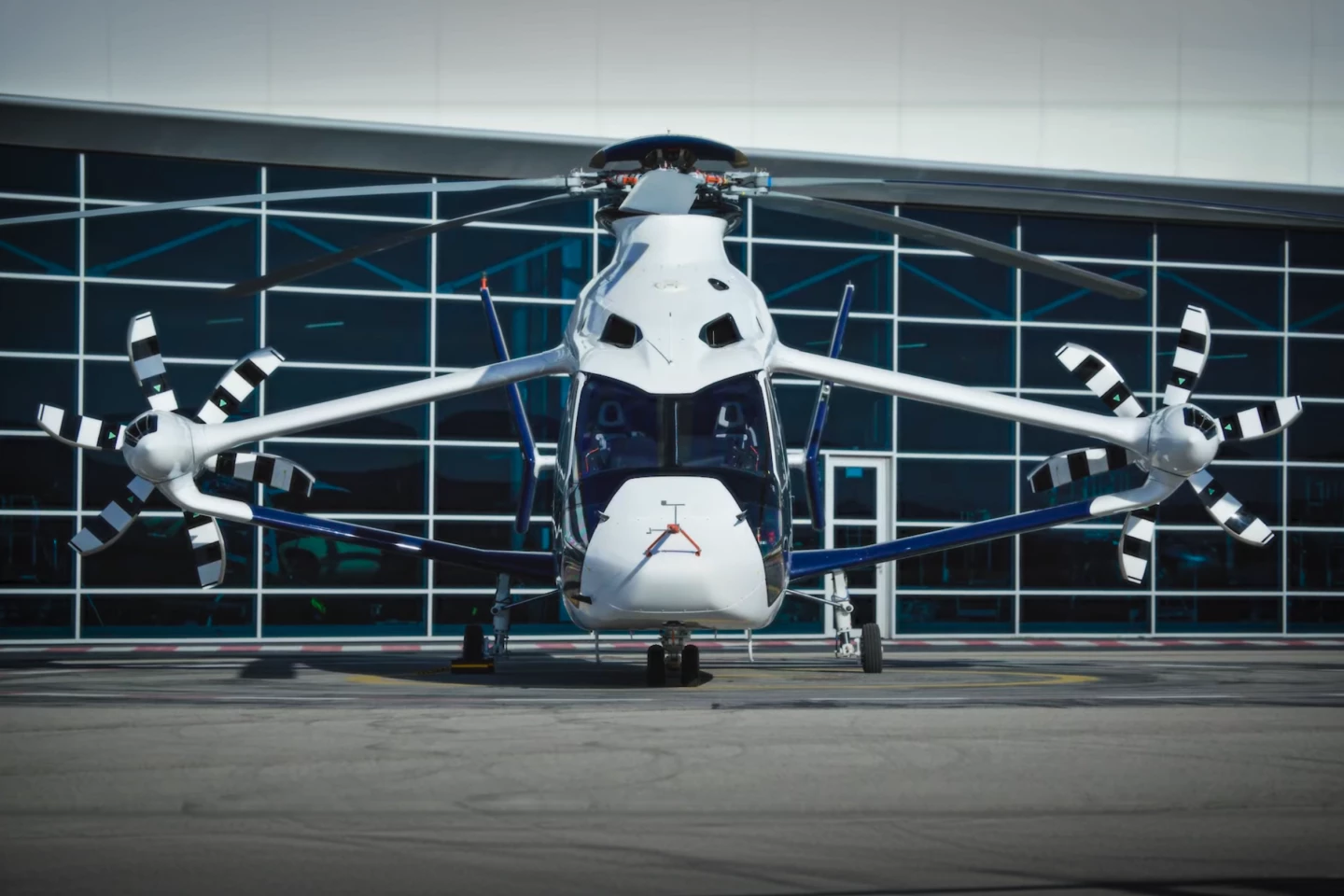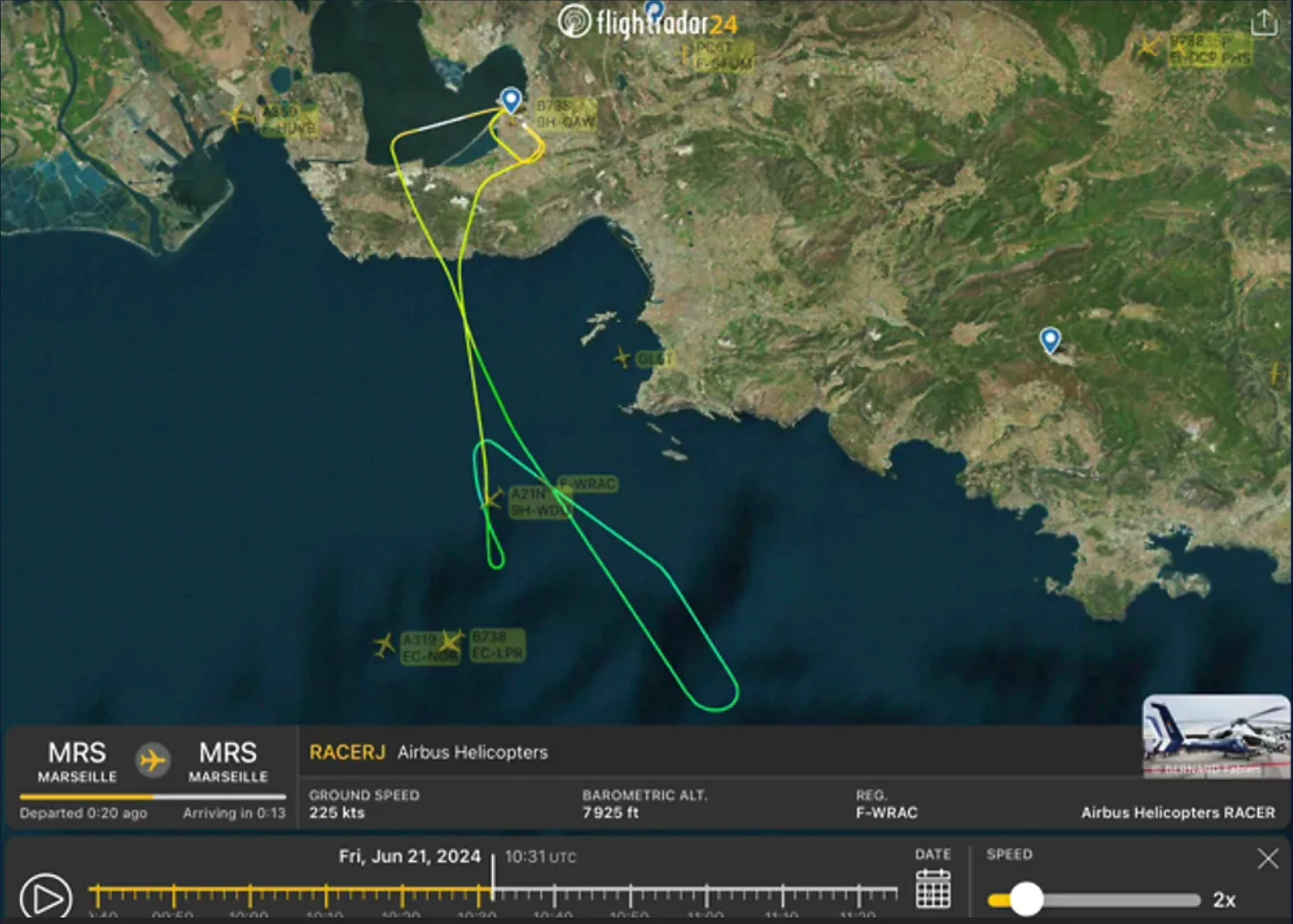Conventional helicopters have a built-in speed limit, imposed by the physical limitations of their top-rotor lift systems. This fascinating Airbus project has found a way to break through that speed limit, and it's already done it in flight testing.
The speed limiter in question here is called retreating blade stall. You can think of a helicopter's top rotor blades as wings – wings capable of varying their pitch to generate more or less lift as they rotate around the main rotor shaft – a concept demonstrated beautifully by a much younger yours truly using a cricket bat in the back yard in our magnificently low-budget How to Fly a Helicopter video from 2010.
The trouble is this: if the top rotor's rotating counterclockwise, the blades on the left hand side of the helicopter are travelling backwards, and the blades on the right are travelling forwards. So they generate an equal amount of lift all the way around at zero airspeed, but as soon as you're moving relative to the air, the blades on one side are moving into the wind, increasing airflow over the blade and generating more lift, while the blades on the other side are moving back with the wind, decreasing airflow and reducing lift.
The faster you go, the more pronounced this asymmetry becomes, until you reach a point at which you can no longer steer your way out of it with the cyclic control, and if you tried to go any faster, the helicopter might go into a destructive series of harmonic vibrations, or flip over and fall out of the sky, which is not ideal.

The "Vne," or Velocity Never Exceed, or aerial speed limit on conventional helicopters takes this retreating blade stall into account as one of its key factors. A typical civilian chopper like the Robinson R44 is limited to just 241 km/h (150 mph), for example, and even the quickest can't go much further than 370 km/h (230 mph). The official DAI-approved Guinness World Record for the fastest speed in a helicopter has stood fast at 400.87 km/h (249.09 mph) since it was set in 1986, in a modified Westland Lynx.
Unofficially, the rather unconventional Sikorsky X2 is the fastest helicopter in history. In 2010, Sikorsky claims this high-speed demonstrator achieved 463 km/h (287.69 mph) in level flight, and some 481.5 km/h (299.2 mph) in a shallow dive.
Mind you, the X2 gets around retreating blade stall by putting an advancing blade and a retreating one on both sides of the aircraft – it runs a stacked coaxial pair of top rotors, rotating in opposite directions, as well as a big pusher prop on the back, to go that quick.
Which brings us to the Airbus Racer, which has just beaten its level flight cruise speed objective of 407 km/h (253 mph) in a test flight, topping out at a claimed 420 km/h (261 mph).
This remarkable aircraft uses just a single top rotor – but it's still far from what you'd call conventional. The racer doesn't run a typical tail rotor; instead, a pair of relatively slim box wings extend out sideways from the top of the cabin, then tuck under and return to join the bottom of the cabin. At the ends of these wings sit two large pusher propellers.
In a hover, these props can balance out the torque from the main rotor much like a normal tail rotor does. But at speed, the box wing configuration contributes more and more lift, until the Racer is able to slow down its top rotor, and effectively relies mainly on the wing lift for high speed cruise flight, while tucking its landing gear away for reduced drag.
It's a pretty wild looking machine – check it out:
There are other advantages than just bulk speed – the Racer also derives significant efficiency benefits from acting like a plane. Helicopters burn a ton of fuel constantly holding themselves up on engine power, and as a result the Racer saves an estimated 15-30% on fuel costs by incorporating winged cruise, allowing it to switch one of its 2,500-plus horsepower engines onto standby.
Airbus says it's also great for the aircraft's noise profile to slow that big rotor down, since that's where the bulk of a helicopter's ground noise signature comes from.
But speed is definitely a key focus, and the Racer likely has more up its sleeve, since this test was really aimed at validating that the aircraft is capable of reaching its cruise speed rather than pushing for a record.

Like the Sikorsky X2, though, the Airbus Racer is just a demonstrator at this stage, proving concepts that'll take some years yet to filter through to the commercial market. But it's certainly promising to note that it's nearly met all its flight envelope objectives within just seven test flights and around nine hours in the air.
“This achievement in such a short space of time is really a testimony to the hard work of our 40 partners in 13 European countries to bring all of this innovation to flight," said Bruno Even, CEO of Airbus Helicopters. "On top of its performance, the aircraft's aerodynamic behavior and stability are promising. We are all looking forward to the next phase of flight testing, especially the eco-mode which will enable us to shut down one engine in forward flight, thus reducing fuel consumption, and lowering the CO2 emissions."
Source: Airbus








